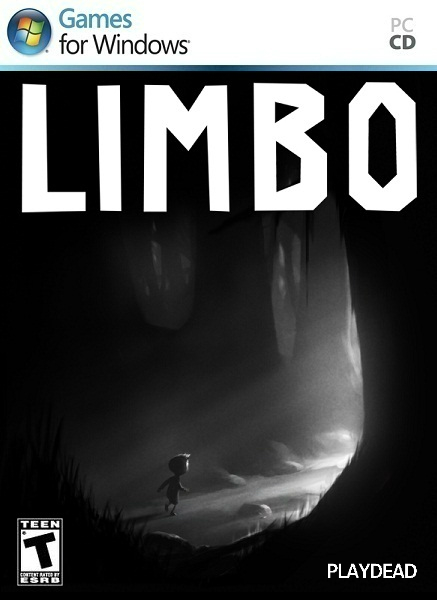
Info:
Developer/s: Playdead
Platform/s: Xbox Live Arcade, PlayStation Network and Windows Platform (via Steam)
Genre: Puzzle-Platformer
Release Date: 2011-08-02 (Steam Edition)
As one of this blog’s readers pointed out sometime ago, it seems that attempting to quantify something like a video-game by singling out and rating it in sections (graphics, lifespan, etc) in order to give it an overall score can be somewhat confusing as it raises constant questions as to why, for example, one aspect of the game scored a ‘4’ instead of a ‘5’. In the end though, this is a self-interest blog and most of the articles written here are solely my opinion. However, in light of this, I have revised the way in which I shall review computer & video-games and will employ a ‘unified’ method whereby the review shall be one streamlined ‘opinion piece’ with a final rating at the end. The score system will work as follows – games will be rated as either S, A, B, C, D or F (See the Rating Systems page for more information). Okay, so now that that’s been covered, on with the review.
Limbo has been around for quite some time now, however due to Xbox exclusivity, it took over a year before PlayStation and PC gamers could get their hands on this game. This review is focused on the Steam (a digital distribution platform) version of the game as this is obviously the version that I have. There really isn’t much of a plot to Limbo, and before reading the wiki page, it really never occurred to me that there was a plot to begin with – turns out there is, you play as a nameless protagonist (a young boy) who is searching for his missing sister. However, it is rather apparent that the wafer-thin plot only serves as a staging ground for the myriad of lethal puzzles that the player has to solve in order to progress through the world of Limbo. The lack of a typical narrative (text or cut-scenes) also leaves the plot open to much interpretation, but this was done so on purpose by the developers allowing the player to make up their own mind as to exactly what it was that they’ve experienced.

Limbo was created by independent, Danish developer Playdead founded in 2006 by Arnt Jensen and Dino Patti. The company is based in Copenhagen, Denmark and Limbo is their first title to date. Limbo draws much inspiration from old-school side-scrolling plat-formers reminiscent of the NES, SNES and Sega Genesis era. You control a character in a 2D sidescroller environment, and in the typical fashion, you are able to run left or right, jump, climb and manipulate certain objects (like crates) by pushing or pulling. Your character can be manipulated fluidly throughout the game environment and is a joy to control with little to zero frustration due to the near-perfect game-style. Perhaps a little less typical of the genre, Limbo employs the use of a physics-based game engine named Unity that governs the environment as well as the player character. Limbo’s puzzles are all basically physics-based and are for the most part, downright insidious which is not surprising given the fact that Playdead designed the puzzles expecting the player to fail the first time around before finding the correct solution. Playdead refer to the play style as ‘trial and death’, and what deaths they are, as this game is unexpectedly gruesome oftentimes seeing your character, decapitated, impaled, shot, shredded or electrocuted before a correct solution to a puzzle is found. While the puzzles are initially simplistic and singular in nature, as you progress, they become ever-more elaborate and multifaceted, forcing players to think outside the box. Some of the ‘magnet-puzzles’ are particularly brain-melting.

Moving on, the most notable aspect of this game is undoubtedly its visuals. Limbo is primarily presented using black-and-white monochromatic tones and hues and incorporates a film grain effect to create an eerie game environment and overall visual style. Critics have applauded the visuals having compared it to film noir and even German Expressionism. The characters in the game, including the giant spider (creepy bastard) as well as the protagonist have no discernible detail to speak of, merely portrayed as black silhouettes (save for the white blinking eyes of the human characters) but this minimalistic aesthetic is a welcome breath of fresh air, especially in an age of highly detailed 3D-polygonal models that gamers have grown accustomed to over the years. While Limbo is definitely game-play driven, the dark and creepy visual style compliments the game beautifully. Limbo doesn’t have much in the way of a soundtrack, but the acoustic compositions (a form of electroacoustic music) of Martin Stig Andersen, serve as the perfect ambient remedy employing the game’s environmental sound effects to build atmosphere.

Limbo is not a very long game, and can be finished in one sitting (provided you haven’t stormed off in frustration over some yet-to-be-solved puzzle) and being an independent game, created by a relatively unknown (and small) company, the game’s shortness is quite understandable. My only real gripe with Limbo is its rather abrupt and somewhat unsatisfying ending, but it doesn’t really detract from the overall experience of the game and apart from that I cannot think of any other cons.
Conclusion
With the tagline – “Uncertain of his sister’s fate, a boy enters LIMBO“, Limbo is certainly an intriguing little gem amongst the myriad of computer & video-games available, winner of more than 90 awards, Limbo is well worth your time and given the small file size of this downloadable content (approximately 70MB) and the relatively light system requirements (though the game may struggle to run on systems with integrated graphic solutions) there really is no excuse to not play it. But be warned, this is a puzzle-game through and through, and gamers unfamiliar of the genre, who spend all their time playing fast-paced first-person shooters or racing games will probably not like Limbo given that expansive 3D worlds have been forsaken in favour of a simple, 2D approach, be that as it may, Limbo is an awesome game. Highly recommended.
Grade: A

Gawd, Sounds definitly like my kind of vibe.
Cant wait to be able to play it!
🙂 The pictures look ghostly (awesome!), and knowing more about the story makes it almost more intriguing.
Great article…
Thank-you, and yes, the game is filled with ghostly awesomeness 🙂
been hearing about it for a long time…just dint think it was my type-a-game..so never tried it…but i guess i will now…sounds pretty nice…